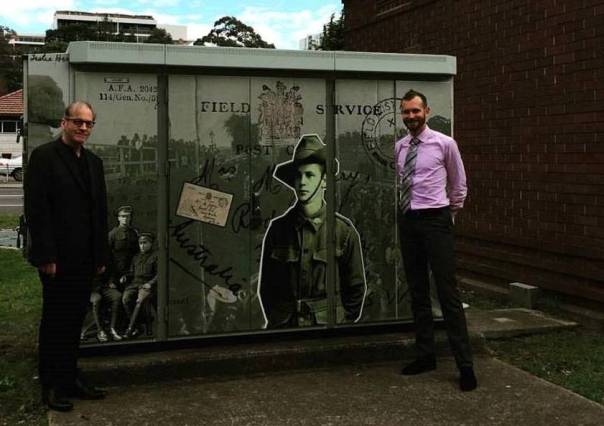Category Archives: More than just a name
Greetings from afar
During the First World War the Australian Comforts Fund co-ordinated the distribution of small gifts to soldiers to make their life a little more pleasant.
It was formed in August 1916 and co-ordinated the efforts made by various existing State based patriotic funds. In the field, its activities were overseen by commissioners who held honorary rank as officers. Local Drummoyne Alderman, Mayor and politician, Thomas Henley was one such commissioner who visited Egypt, France and Britain in his work for the Australian Comforts Fund. His own son, Lieutenant Harold Leslie Henley was killed in action on 15 August 1916 in France.
This postcard was distributed to soldiers by the Australian Comforts Fund at Christmas 1916. It was sent by Private Henry George Jeffery to his family in Five Dock. Harry was killed in action on 4 October 1917 in Belgium.
The postcard artwork is by Laurie Tayler (Lawrence B. Tayler), an Australian artist and cartoonist of the period. The gentle humour of the postcard (‘People have been very kind to me in London’) belies the horror of the First World War experience.
Remembrances of war
Throughout the City of Canada Bay there are many memorials, large and small, dedicated to the memory of local men and women who served our country in war.
Local Studies is custodian of two memorials to those who served in the First World War, the Drummoyne War Service Record, which records those who served from the Drummoyne area and the Lysaght Bros Roll of Honour, which records the names of workers from the Lysaght factory at Chiswick who served .
The beautiful memorial, above, pays tribute to nine soldiers from the Five Dock Methodist Church (now Five Dock Uniting Church) who did not return from the First World War. Undoubtedly it was crafted with love and compassion.
Images of some of the war memorials in the City of Canada Bay can be seen on flickr.
An album of memories
A small display in the Local Studies area at Concord Library provides a glimpse into the story of two brothers who served in the First World War.
Margaret Jeffery lovingly collected the letters and postcards sent by her sons during the First World War in an album. One hundred years later they provide a very special glimpse into the lives of the soldiers and the conditions they experienced. Private Henry (Harry) Jeffery was killed in action in Belgium on the 4 October 1917, aged 19 years. His brother, Private Robert (Bob) Jeffery was only 15 years 8 months when he enlisted. He served in the Middle East until the Army found out he was underage and sent him back to Australia.
The photograph of soldiers, above, includes Harry Jeffery (second from the left, marked with a cross). The photograph may have been taken during training in Britain. The hut in the background would appear to be an army mess or kitchen, judging by the pots and utensils in the picture.
The Jeffery Album was generously donated to Local Studies by Christine Tracy, a descendant of the brothers, in 2014.
Brothers in arms
While brothers from the same family often enlisted in the First World War, it was uncommon to see four brothers do so. At Drummoyne the Erickson brothers, Albert Victor, Roy Robert, Bertie Theodore and George Peter all enlisted to serve.
Educated at Drummoyne Public School, the Erickson brothers were keen sportsmen. All four swam with the Drummoyne Amateur Swimming Club, with Bertie (known as ‘Bert’) and George also playing in the Drummoyne Water Polo team. Albert’s other enthusiasm was Australian Rules Football, playing first for Drummoyne he then captained the Western Central team. Bert was also a rower with the Balmain Rowing Club.
Albert Victor Erickson, enlisted in August 1915 and served with the 3 Battalion, later transferring to the 45 Battalion. Roy Robert Erickson enlisted in July 1915 and served with the 18 Battalion. Tragically, Albert and Roy were killed in action within a day of one another in the Battle of Pozieres in France. Roy died on 5 August 1916, aged 19 years while Albert died on 6 August 1916, aged 23 years.
The photograph of the memorial plaques commemorating Albert Victor and Roy Robert was kindly donated to ‘Canada Bay Connections’ earlier this year by Ian Vinall.
Tobruk anniversary
This year marks the 75th anniversary of the siege of Tobruk during the Second World War.
Five Dock has played a special part in the commemoration and remembrance of Tobruk. The photograph shows the unveiling of the Tobruk obelisk at the corner of Lyons Road and Great North Road by Sir Roden Cutler in 1968. It is modelled on the memorial at the Tobruk War Cemetery. Adjacent to the memorial is a row of trees planted by the Ladies of the Rats of Tobruk Association and the mast of the HMAS Vendetta which played a vital role in supply and reinforcement at Tobruk.
Each year veterans met at the memorial on ‘Tobruk Sunday’, the Sunday in April closest to the date when the siege began on 10 April 1941. Last year was the last occasion that the Tobruk veterans marched at Five Dock.
The 100 years of Anzac page includes some fascinating memories of Tobruk veterans.
Christmas 1915
In 1915 Private Robert (Bob) Jeffery sent this simple card from Cairo to his family in Five Dock. It was printed on lightweight paper in Cairo and distributed to soldiers by the Australian Comforts Fund. At home it was lovingly preserved by his mother Margaret Jeffery in an album of postcards and letters sent by her two sons and nephew while serving in the First World War.
Bob was only 15 at the time of his enlistment. On Christmas day 1915 he wrote to his family,’I hope you all enjoyed your Xmas dinner, because I did, I had some roast turkey, boiled cabbage & roast potatoes, also some pudding and the day before yesterday most of us got our Xmas gifts from the Australian Comforts Fund. I got a billy can full of tobacco, cigarettes, cigars and matches, chocolate…writing paper, a plum pudding and a little square box with a dozen postcards… I don’t think I’ll go short of smokes for a while.’
After serving in the Middle East, Bob, like the message on the card, returned to his family in Australia.
Restoring their names
Erected in 1921, the Concord War Memorial has been the focal point for Anzac Day services for over ninety years.
Some 600 men and women from the Concord area enlisted to serve in the First World War, a remarkable number considering the population at the time is estimated to have been less than 11, 000.
At present conservation work is being carried out on the marble tablets so the names will be legible once again. Thus the original intention of the memorial ‘to perpetuate the memory of our nurses, sailors and soldiers who enlisted in the Great War 1914-1919’ will be fulfilled.
The work will be completed by Remembrance Day, 11 November 2015.
It all began with Florence
Florence Nightingale, who came to prominence during the Crimean War, is regarded as the founder of modern nursing. In 1867 Henry Parkes appealed to Florence Nightingale for trained nurses for the Sydney Infirmary and Dispensary. The following year Lucy Osburn arrived in Sydney and modern nursing practice began in Australia.
The City of Canada Bay Museum currently has a display, ‘It all began with Florence’, marking the involvement of Australian nurses in the Boer War through the First and Second World Wars to more modern conflicts. Among the stories is that of the hospital ship Centaur which was sunk during the Second World War with great loss of life. The Centaur is commemorated by a beautiful stained glass window in the foyer of the Concord Repatriation General Hospital, shown above.
The display continues at the City of Canada Bay Museum until December.
Commandos
To coincide with NSW History Week, Frank Walker will be speaking at Five Dock Library about his recently published book Commandos.
Frank Walker is a veteran journalist who has previously written books on the Vietnam War and British atomic tests in Australia. His latest book Commandos is a gripping military history written from the perspective of those who lived it. The talk will be at Five Dock Library on Thursday, 3 September 2015, at 6pm for a 6.30pm start. Bookings can be made online.
NSW History Week from the 5-13 September 2015 focusses on the theme ‘War, nationalism, identity’. For more information on activities see History Council NSW.
Rhodes art work remembers local soldiers
A new art work by Olev Muska at McIlwaine Park commemorates the service of local soldiers during the First World War.
Olev (left) has drawn on images from the Local Studies photographic collection, Canada Bay Connections and the Australian War Memorial to create a fascinating work. Against the background photograph of the unveiling of the Rhodes Honour Roll in 1919 can be seen images of Walter Brooks, the Seabrook brothers and a Field Post Office card sent by Harry Jeffery to his mother before going into battle.
The art work ensures that those who served in the First World War are remembered as ‘More than just a name’.
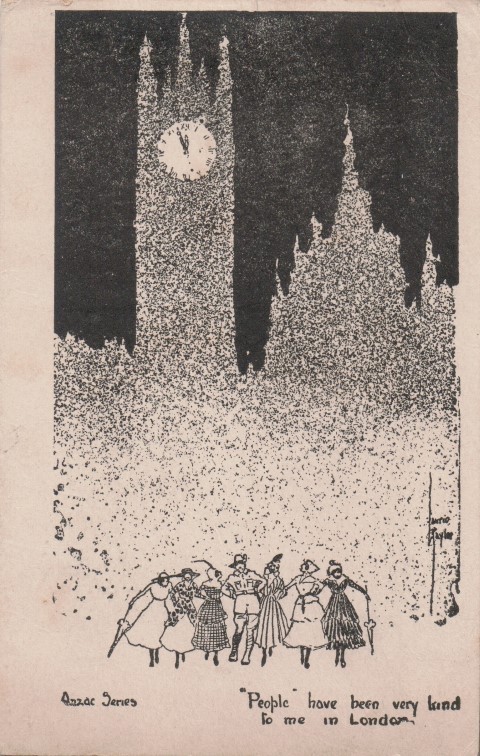

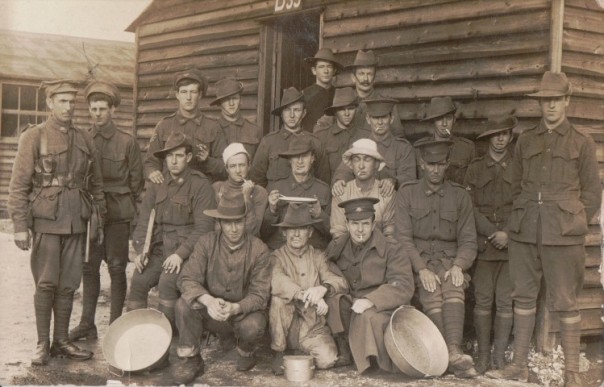

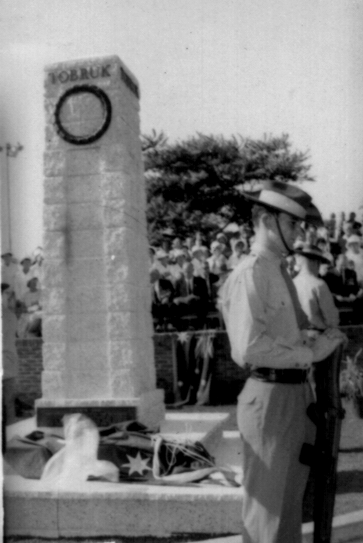
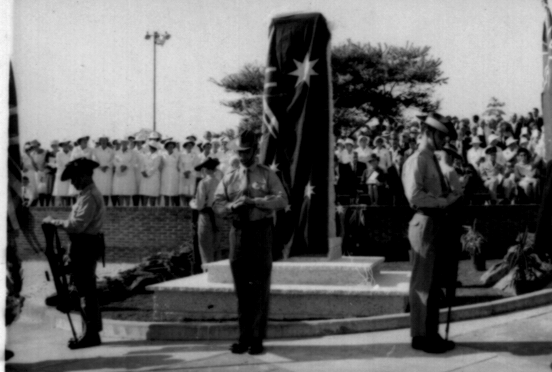
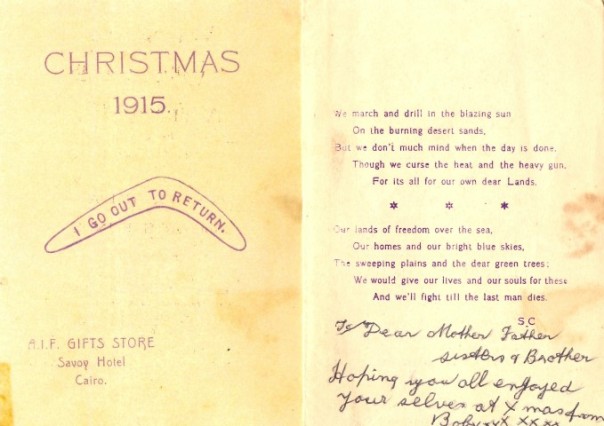
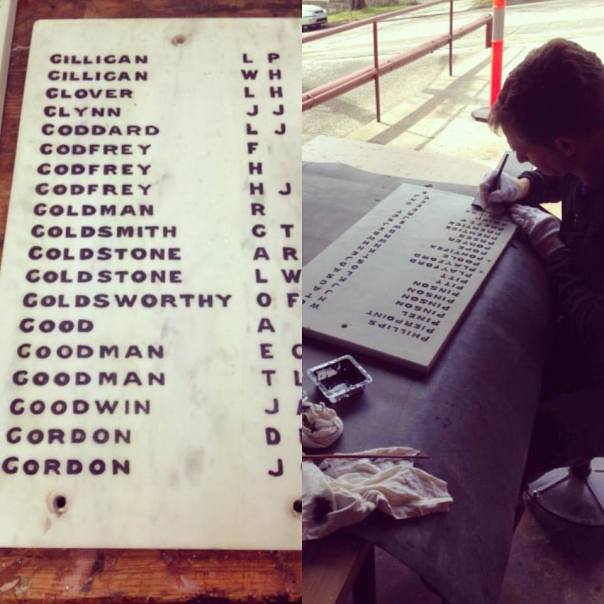
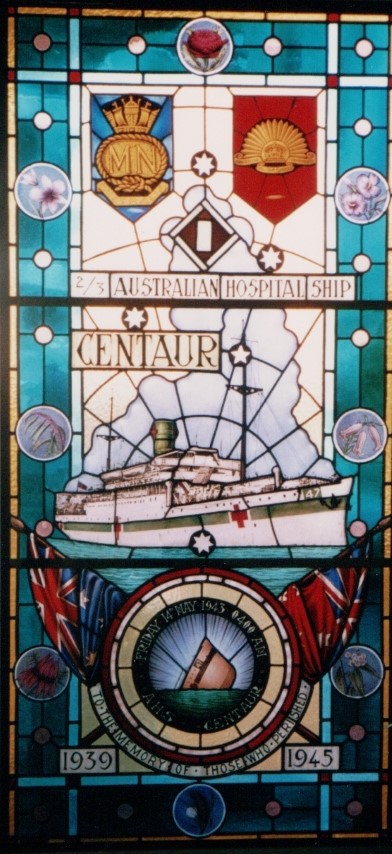
![commandos-cover[1]](https://canadabayconnections.files.wordpress.com/2015/08/commandos-cover1.jpg?w=604)
